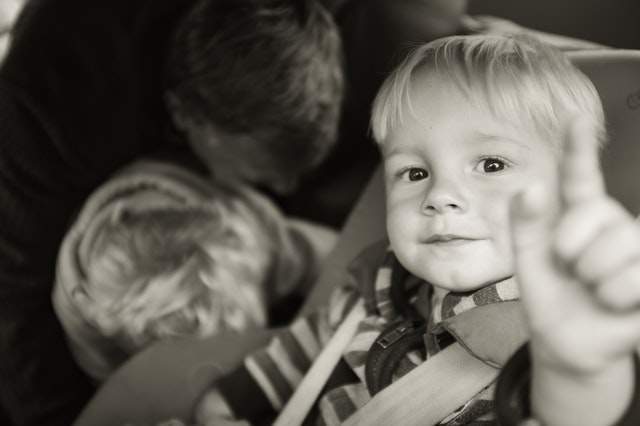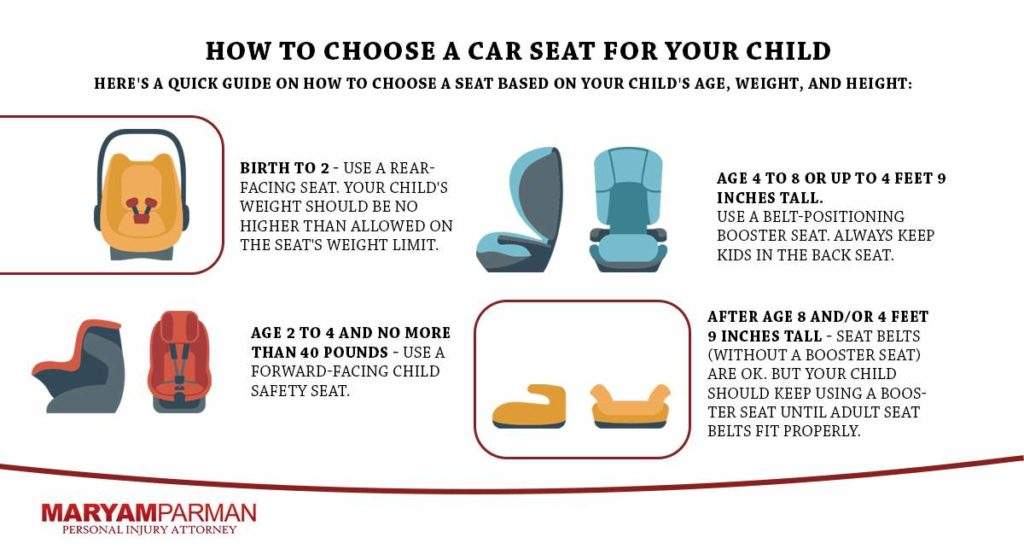Car Seat Types
The car seat you buy will depend upon the height, weight and age of your child. Your baby will go through different stages that require different types of car seats. Don’t trade up to the next stage too quickly. It is important to keep your child in a rear-facing car seat for as long as you can.
When you are starting out, you have the option of putting your newborn into a convertible car seat or a dedicated infant seat. Although convertible types can be forward facing as well as rear facing and will hold your baby until he or she is two years old, the infant car seat is a much safer and more comfortable choice.
Infant Car Seat
The best and safest type of car seat for newborns is an infant car seat that is rear-facing. They are convenient with an easy-to-use carrier that is detachable and mounts onto a base that stays in the car. When it is time to get out of the car, you just click and take the seat with baby in it. You can also buy additional bases if necessary.
All babies should use a rear-facing seat until they are two years old or have reached the height and weight limit of whatever seat you are using. Weight ranges for infant car seats can start at 4 pounds and go up to 35 pounds maximum. Infant seats are equipped with five-point harnesses that offer good security for your baby and can only be used in a rear-facing position which is much safer in the event of a crash. The seat should also be adjusted to recline at a 35 to 45-degree angle.
You can install some seats without the base, but the installation is not as secure and often lowers the weight limitation of the seat. Buying a stroller travel system that includes the car seat, stroller and base is also an option.
This is a good way to save money if you are planning to buy a stroller as well as a car seat.
Convertible Car Seat
Similar to the infant model, this type has a five-point harness system and is rear-facing but also has the option of being forward-facing, hence the name convertible.
Some convertible models can accommodate a baby from birth up to 45 pounds. There are some companies offering convertible models for toddlers weighing up to 80 pounds and an allowable height range from a 19″ minimum up to a 53″ maximum.
A convertible car seat will allow you to change from a rear-facing position to a forward-facing one once your child grows into the toddler range. Although this can save you money, this type of seat does not offer the same convenience or fit of an infant car seat. They are also not stroller compatible, which is inconvenient if you take your baby in and out of the car often.
All-In-One Car Seat
An all-in-one seat has all the same features of a convertible seat. It can be forward or rear-facing and has a five-point harnessing system. However, this type can be used, after removing the harness, as a belt positioned booster seat. As the name implies, this seat is designed to meet all your car seat needs from birth until the time you transfer your child into a booster seat. The advantages of an all-in-one seat are higher rear-facing weight limits (up to 40 lbs.) and a longer seat length. The increased length makes it easier to keep your baby in a rear-facing position for a longer time without having to worry about the weight limitation.
The forward-facing weight limit of this type seat is 50 to 65 pounds while still using the five-point harness. This allows toddlers to take advantage of the five-point harness system, which is a much safer and preferred method than the 3-point seat belt system of your vehicle. An all-in-one will definitely save you money because it could be your child’s only car seat. The larger size allows your child to stay rear-facing and safe for a longer time, but it may not work as well for a newborn as an infant car seat.
Toddler Booster Combination Car Seat
This model is designed for use as a forward-facing seat only. These seats can be forward or rear-facing and have five-point harnessing systems and will easily convert into a toddler booster seat after your child grows out of the harness.
When your child has reached the upper height and weight limits of the five-point harness, it is a simple task to remove the harness. Now you have a booster seat that will raise your child to the proper height for use of your vehicles seat belt.
There are a few things that you need to consider when opting for a toddler booster combination car seat. Some manufacturers will certify that the weight range for particular model is between 20 and 65 lbs. It is not recommended, nor is it a good idea, to put any child or infant weighing as little as a 20 lbs. in a forward-facing car seat. Oftentimes, some children under the age of three will weigh enough to meet the low-end weight requirements of a belt positioned booster. Research has shown that this is not nearly as safe as a five-point harness when facing forward.
Booster Seats
It is easy to mistake a toddler booster combination for a high-backed booster seat and vice-versa. The simple difference is that a high-backed booster doesn’t have a harness and is meant to be used with your vehicle’s 3-point seat belt.
A belt-positioned booster or “booster seat” doesn’t have a harness built-in. It is designed only for use with your vehicle’s seat belts. A booster seat does not require any installation. Some of the more recently introduced models do come with LATCH (“Lower Anchors and Tethers for Children”). LATCH will keep the booster secure and prevent it from flying forward in the event of a crash. When using a booster, it is the vehicles seat belt that keeps your child secure, not the booster seat. Some of the high back booster seats have slots or guides that help you better position the belt on your child, but a backless booster is only a cushion that raises your child enough to enable the use of a seat belt.
A quality booster seat will put the shoulder section of the seat belt over the strong bony part of your child’s collarbone and chest and allow the lower strap of the belt to go across his or her hips and thighs, and not across the stomach or abdomen. When properly fitted, your child’s back should rest comfortably against the back of the vehicle seat (or the back of the booster seat, if using one). Your child’s knees should bend comfortably at the seat’s edge. The safety belt should also stay put when your child moves about on the seat.
Always have your children’s safety in mind — Give us a call if you need legal help!


